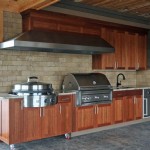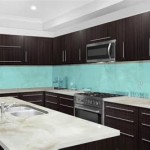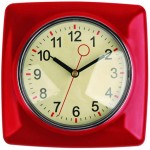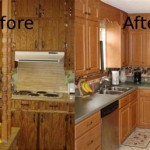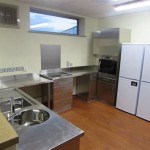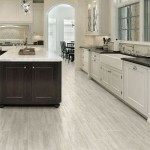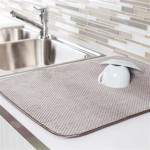How to Reface Kitchen Cabinets: A DIY Guide
Refacing kitchen cabinets is a cost-effective and relatively simple home improvement project that can dramatically change the appearance of a kitchen without the expense and disruption of a full remodel. Essentially, refacing involves replacing cabinet doors and drawer fronts and applying a new veneer to the existing cabinet boxes. This process allows homeowners to update the style and finish of their kitchen while preserving the structural integrity of the cabinets themselves.
This article provides a detailed guide to refacing kitchen cabinets as a do-it-yourself project. It covers the necessary tools and materials, provides step-by-step instructions, and offers tips for achieving a professional-looking result. While some experience with home improvement projects is beneficial, many homeowners with basic handyman skills can successfully reface their kitchen cabinets.
Planning and Preparation: The Key to Success
Before embarking on the refacing project, meticulous planning and preparation are crucial. This phase involves several key steps, including assessing the existing cabinets, selecting materials, taking accurate measurements, and preparing the workspace.
The first step is to thoroughly inspect the existing cabinet boxes. Refacing is only a viable option if the cabinet frames are structurally sound and in good condition. Look for signs of warping, water damage, or significant deterioration. If the cabinet boxes are damaged beyond repair, replacement may be a more sensible option. Also, consider the layout of your kitchen. Are you happy with the current arrangement? Refacing provides an opportunity to make minor adjustments, such as adding or removing a cabinet, but significant changes would likely necessitate a full remodel.
Once you have determined that refacing is the right choice, the next step is to select the new doors, drawer fronts, and veneer. A wide variety of materials, styles, and finishes are available, ranging from solid wood to laminate and veneer. Consider your budget, aesthetic preferences, and the overall style of your kitchen. Solid wood doors offer a classic and durable option, but they are typically more expensive than laminate or veneer. Laminate is a cost-effective and easy-to-clean material that is available in a wide range of colors and patterns. Veneer offers the look of real wood at a lower cost.
Accurate measurements are essential for ensuring a successful refacing project. Carefully measure each cabinet box, door opening, and drawer opening. Record these measurements on a detailed diagram of your kitchen. It is crucial to be precise, as even small errors can result in ill-fitting doors and drawer fronts. When ordering doors and drawer fronts, specify the exact dimensions, hinge boring locations (if applicable), and any other custom specifications.
Preparing the workspace is another important step in the planning phase. Clear the kitchen of all appliances, countertop items, and other obstructions. Cover the floors with drop cloths to protect them from dust and debris. Set up a well-ventilated work area for cutting and sanding materials. Gather all the necessary tools and materials and organize them in a convenient location.
Removing Existing Doors, Drawer Fronts, and Hardware
The next step is to remove the existing doors, drawer fronts, and hardware from the cabinet boxes. This process typically involves unscrewing the hinges and drawer pulls. Before removing the doors, label each door and cabinet box with a corresponding number or letter. This will help you keep track of which door belongs to which cabinet and ensure that you reinstall them in the correct location. Take a picture of the cabinet layout before you begin to help with reassembly.
For doors attached with traditional face-frame hinges, simply unscrew the hinges from the cabinet frame. For doors attached with concealed European-style hinges, you may need to release a locking mechanism to detach the door from the hinge. Drawer fronts are typically attached to the drawer boxes with screws. Remove the screws from the inside of the drawer box to detach the drawer front.
Once the doors and drawer fronts have been removed, remove all remaining hardware, such as knobs, pulls, and hinges. Fill any holes or imperfections in the cabinet boxes with wood filler. Allow the wood filler to dry completely and then sand it smooth.
After removing the existing doors and drawer fronts, clean the surface of the cabinet boxes thoroughly. Use a degreasing cleaner to remove any grease, dirt, or grime. Rinse the surface with clean water and allow it to dry completely. This ensures proper adhesion of the new veneer.
Applying New Veneer to Cabinet Boxes
Applying the new veneer to the cabinet boxes is a critical step in the refacing process. The veneer is typically self-adhesive, but some types may require the use of contact cement. Follow the manufacturer's instructions carefully to ensure proper adhesion.
Before applying the veneer, cut it to the appropriate size and shape. Use a utility knife or scissors to cut the veneer slightly larger than the surface you are covering. This will allow you to trim it to the exact size after it has been applied. When cutting, ensure that the veneer patterns are properly aligned along adjacent cabinet surfaces. For example, if using a wood grain veneer, be sure that the grain direction is consistent.
Peel off the backing from the veneer and carefully apply it to the cabinet surface. Start at one edge and slowly work your way to the other edge, smoothing out any bubbles or wrinkles as you go. Use a J-roller or a similar tool to apply firm pressure to the veneer and ensure that it is firmly bonded to the cabinet surface. If you are using contact cement, apply a thin, even coat of cement to both the cabinet surface and the back of the veneer. Allow the cement to dry for the recommended time and then carefully align the veneer and press it into place.
Once the veneer has been applied, trim any excess material with a utility knife. Use a straightedge as a guide to ensure a clean, straight cut. Be careful not to damage the underlying cabinet surface. After trimming, sand the edges of the veneer smooth with fine-grit sandpaper. This will create a seamless transition between the veneer and the cabinet box.
For edges and corners, special edge banding veneer is often used. This is narrower and sometimes more flexible. Apply it using heat from an iron for a secure bond. Again, trim and sand for a flawless finish.
Installing New Doors, Drawer Fronts, and Hardware
The final step in the refacing process is to install the new doors, drawer fronts, and hardware. This involves attaching the doors to the cabinet boxes with hinges, attaching the drawer fronts to the drawer boxes with screws, and installing new knobs or pulls on the doors and drawers.
Before installing the doors, ensure that the hinge boring locations on the new doors match the hinge locations on the cabinet boxes. If using concealed European-style hinges, install the hinges on the cabinet boxes first and then attach the doors to the hinges. Adjust the hinges as needed to ensure that the doors are aligned properly and open and close smoothly. If using traditional face-frame hinges, attach the hinges to the cabinet frame first and then attach the doors to the hinges.
To install the drawer fronts, align them with the drawer boxes and attach them with screws from the inside of the drawer box. Ensure that the drawer fronts are flush with the top and sides of the drawer boxes. If the drawer fronts are not aligned properly, loosen the screws and adjust their position until they are aligned correctly.
Finally, install the new knobs or pulls on the doors and drawers. Use a drill to create pilot holes for the screws and then screw the knobs or pulls into place. Be careful not to over-tighten the screws, as this can damage the doors or drawers. Choose hardware that complements the style and finish of the new doors and drawer fronts.
After installing all the doors, drawer fronts, and hardware, inspect the finished project to ensure that everything is properly aligned and functioning correctly. Make any necessary adjustments. Clean the surfaces, and the refacing project is complete.

Diy Cabinet Refacing Budget Friendly Made Easy Wisewood

How To Reface Kitchen Cabinets Affordable Cabinet Update On A Budget Anika S Diy Life

How To Reface Your Kitchen Cabinets Diy Family Handyman

Kitchen Cabinet Refacing The Happy Housewife Home Management

Cabinet Refacing Ideas Diy Projects Craft How To S For Home Decor With

Painted Furniture Ideas Diy Refacing Kitchen Cabinets

Diy Cabinet Refacing Budget Friendly Made Easy Wisewood

Diy Kitchen Cabinets Makeover How To Install New Cabinet Glass Inserts

Cabinet Refacing Ideas Diy Projects Craft How To S For Home Decor With

How To Diy Reface Your Kitchen Cabinet Doors Two Hands
Related Posts

